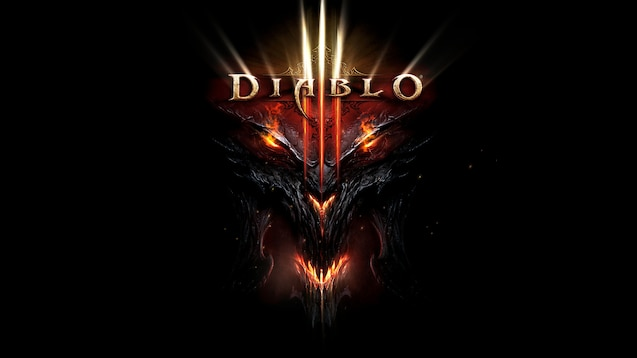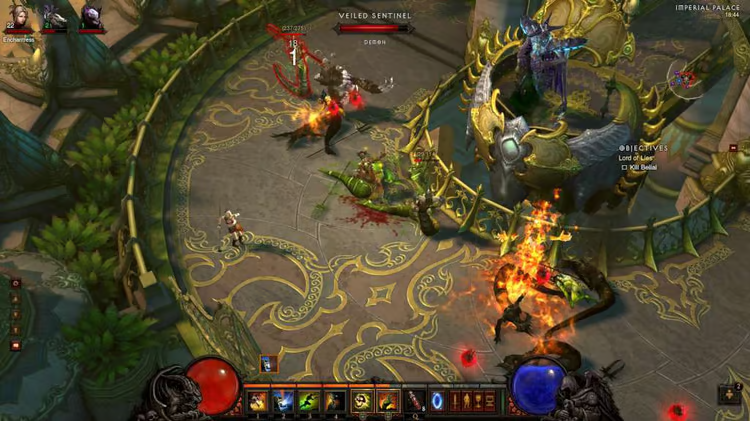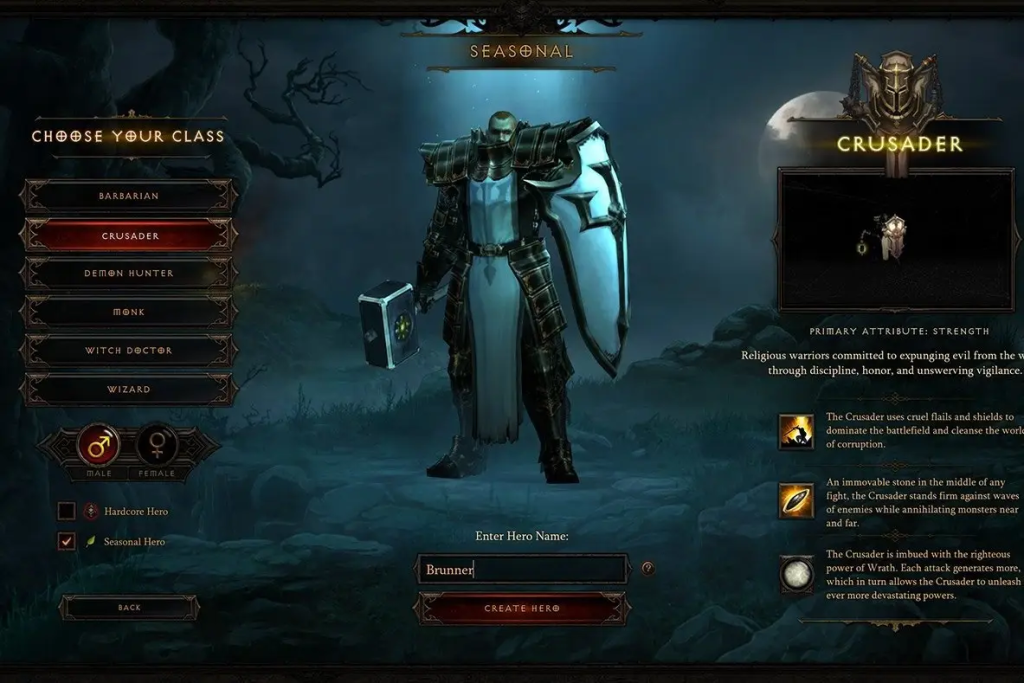
Anyone attempting to pass judgement on Diablo III has three major challenges: it’s Diablo, it’s Blizzard, and it felt as if a decade passed on the making of it back then. As a result, it is difficult to look at this game in any other manner than through the lens of the aforementioned concerns, and this is coupled with another, equally crucial factor – enormous expectations on the part of the players. On the one hand, massive, yet hellishly inaccurate. Was Blizzard able to cook something edible in this simmering cauldron, where the fire is still stoked by hordes of Internet “haters” and “fans”?
For starters, let me state unequivocally that Diablo III is an amazing game. Full of defects or alterations that may be unpopular, yet are beneficial. However, it is not good enough, in my opinion, to get a maximum or extraordinarily high grade. Blizzard once again demonstrated its ability to construct an addicting and highly engaging creation out of well-known pieces. Because the devil is in the details, not all gold that falls out of a cracked barrel is gold.There is however something I cannot leave out, especially as it had a huge influence on the timing of publishing of this review. A riot of various errors preceding login attempts, servers being shut down on a regular basis, attempts to introduce queuing, this is only a brief overview of the first days after the debut. Yes, things are much better now, but the contempt remains.
At this point, we’ll discuss one of the most essential aspects of Diablo III: the game’s strong relationship to the Battle.net network. The concept is the most noble, especially because the gaming client includes a variety of social choices. We now have access to information about our friends’ characters and progress, as well as the possibility to join the game from the main menu. This is undeniably beneficial. Another benefit of this sort of system is strong anti-cheating protection, with a focus on any attempts to “prepare” a more powerful character. These are saved on the game’s servers, as in MMOs, which effectively prohibits any efforts to change their qualities or hardware. Let us also mention that Diablo III is rumoured to have an arena-based PvP option, which was missing on the day of its debut. But how did all of this, together with server failure, result in the inability to play in single player mode? Not only that, but many individuals still see delays and similar phenomena, such as sudden “teleportation” of characters, which have no place in a single-player game. While it doesn’t annoy you too much on the standard difficulty level, it becomes quite unpleasant on the nightmare one. It’s frightening to think about what will happen if things don’t improve.

Another contentious subject is the amount of difficulty. The standard level is even simpler than Diablo II, requiring you to rhythmically interact in the mass of foes. As a result, rather than training us to play on greater difficulty levels, it just serves to erroneously reaffirm our conviction in our own excellence. Already, the nightmare confirms this mistake. And, although I appreciate the desire to make the brand available to as many players as possible, in my opinion, this is not the way to proceed. Getting into the “proper game” without any excitement and lasting several hours is a waste of time. All of the boss bouts are likewise not challenging. The more so in their situation, where a massively repeated pattern is easily picked up: battle to 75% health – boss disappears/runs away/summons minions – 50% health – boss disappears/runs away/summons minions – 25% and so on. A few outliers in The Baddest battles don’t save the day. On the other hand, the benefit is a wide range of opponents, albeit we won’t know for sure until the nightmare begins. Only then can the truly intriguing and vexing variations on elite foes surface.
Diablo III, like its predecessors, is a fast-paced clicker. For me, I understand Blizzard’s conservative approach, but after the fights, I anticipated more. Although there are several strategies, especially in co-op. Even here, battle is as simple as clicking adversaries to death, and collaboration is as simple as jogging together and then switching equipment. It only becomes more exciting after the nightmare, when cooperation necessitates concentration and excellence.
There is good news too; for instance, I appreciate the concept of a new character development system. Instead of trees, point distribution, and other components seen in role-playing cRPGs, we offer a simple, quick, and semi-automatic mechanism for unlocking new talents and changing them with runes. Diablo III has grown comparable to MMO games in this regard, which I believe is the proper choice because it perfectly matches the essence of the game.
And everything would be lovely if these skills were balanced. It’s difficult for me to shake the feeling that Diablo III is full of fillers. Many abilities include spectacular animations that look amazing in Diablo III advertising movies but do nothing else; just a few work in actuality. This may be noticed in images or while exploring the characters of friends, as practically everyone plays on almost the same settings for a specific class. Diablo III is an item-collecting game, or Loot Hoarding as some call it where everyone turns into a loot goblin. To be honest, the character’s base numbers and their symbolic growth every level of experience were most likely left in for sentimental reasons. After just a few hours of playing on the usual level, the benefits from the things you own outshine them several times over. Of course, the true quest for “epics” and sets begins later in the game, but the entire game focuses nearly from the start on one thing – discovering, inventing, or purchasing things that raise the damage factor in a particular class as much as possible.It’s kind of great since it motivates us to beat more foes, just like it used to. We want to be stronger, quicker, and more durable, so we delve underground in search of great loot. Ordinary “blue” and “gold” blend, and the former might have higher benefits than legendary ones. There are fewer of them, but they are more important for the shape of values.
A similar issue emerges while crafting at the blacksmith, who, although fairly competent, has one downside – absolutely random bonus assignment. This rapidly makes it unprofitable, because rather than developing and dismantling successive failed experiments, it is quicker to find anything or simply purchase it at an auction house. Which is frequently significantly less expensive. The only truly worthwhile kind of creation is jewellery, which, while pricey, always produces the same, observable impact. There are more of the previously stated alterations and departures from the “canon” in Diablo III, and practically all of them were included with one goal in mind: to finally get rid of the vexing gameplay components. I enjoy getting rid of all the identification or teleportation scrolls. Instead of wasting time sorting and arranging bits of paper in “cases,” these tasks may now be completed with a single click. The fact that skill information is removed by default is the one thing that has irritated me in this search for simplicity. Apart from a very broad explanation, you must pick the right option in the game menu to see how they operate and what they offer. I understand that Diablo III is also meant to cater to newcomers, however there are certain limitations.

I’ll also continue with the new visual design, which is likely to be the most divisive. Warm hues, hazy and pastel backdrops stand up to the creative scrutiny pretty well. This luminaire has the potential to age extremely slowly. On the one hand, we still have dark and gory underworld themes, yet it can be a little too sweet at times. The preceding portions’ harsh and “gothic” vibe has been softened to the extreme, and it is for this, rather than the riot of colours, that I hold a grudge towards the designers.
I’m particularly concerned about the legibility of the visuals during the most intense conflicts. It happened occasionally, especially in the last act, that in the heat of the combat and with a significant accumulation of various effects, I entirely forgot who I was now defeating. While “normal” and bouts with regular mobs were manageable, even on a nightmare difficulty with a few lovely elite adversaries and a swarm of privates, it became slightly annoying. Here’s another critical remark, or perhaps several. First and foremost, I believe that there is insufficient unpredictability in Diablo III’s maps. Because of the storyline’s development – more on that in a bit – about half of the locations we visit seem nearly identical every time.
Yes, it allowed us to bring more variation on a worldwide scale, but it can lead to weariness with future game runs. It’s perplexing, yet true. More variation results in more repetition. Even in the most unusual dungeons, we run into another issue: they are designed in vast proportions, with various sorts of parts that are frequently repeated on the same level. The main advantage here is that quasi-story Events are randomly located, although the uniqueness limit is frequently reached by the third playthrough.
I haven’t yet explained the storyline or history of our third excursion in Big Evil. In this regard, Diablo III is unquestionably the most substantial element of the cycle. And, while the plot does not surprise with much originality – there are a few twists and turns – it is followed without much gnashing of teeth or anguish. Yes it’s Diablo, so there’s plenty of sadness and lofty phrases in the game, but there’s also a lot of levity. The jokes aren’t always the best, but they’re always entertaining. It’s also good that, while it’s difficult to anticipate a “deep psychological feature” from a hack n slash game, our companions have developed personalities this time.
The game is traditionally divided into four acts, each of which has a dozen or more tasks.It’s a shame that each succeeding act is roughly half, if not a third, shorter than the one before it. I was expecting the fun was just getting started after a couple hours in the first one. Then I breezed through the fourth in less than two hours, completing my first pass. It took me around 18 hours to listen to all of the talks and records, as well as explore every nook of each map which I don’t regret doing.
Okay, one of the longest reviews I’ve ever written is about through, so it’s time to answer the most crucial question: is Diablo III a decent game?
Absolutely, and sometimes even more, given that we are interested in more than a single run on the basic difficulty level. Diablo III is a tremendously engrossing and enjoyable game despite its flaws, inconsistencies, and deficiencies. It has this delicacy woven between the lines of code that keeps me going back to it and ignoring all the difficulties during the game. I’ll be honest: after the first playtime, I started ranking it low. However, every subsequent few hours spent on the game gradually but effectively increased it.
